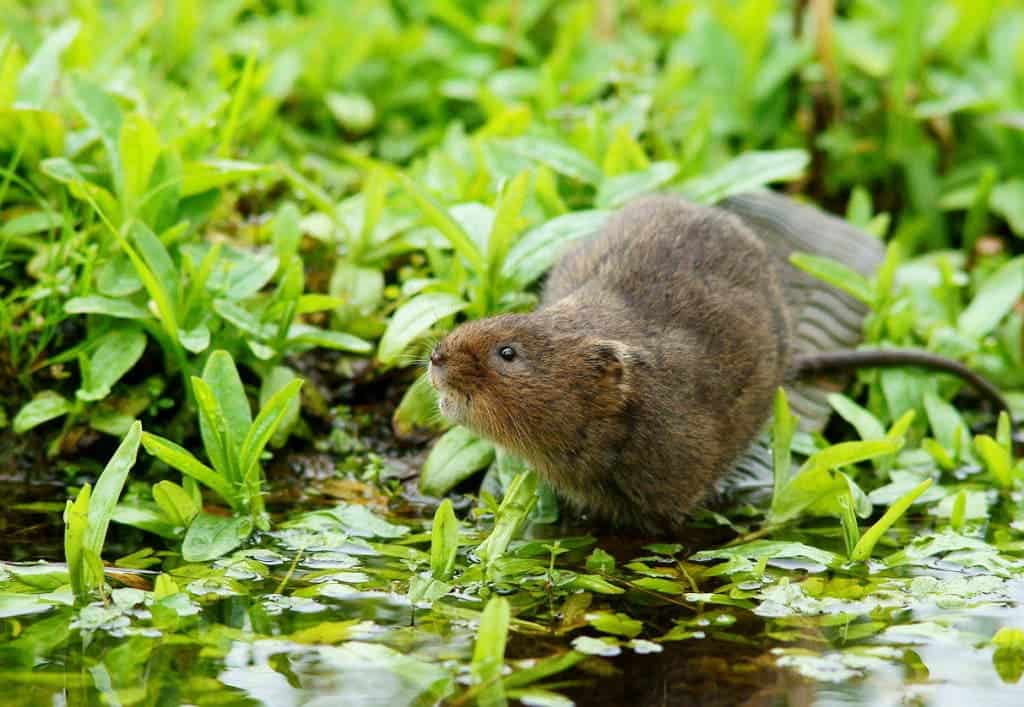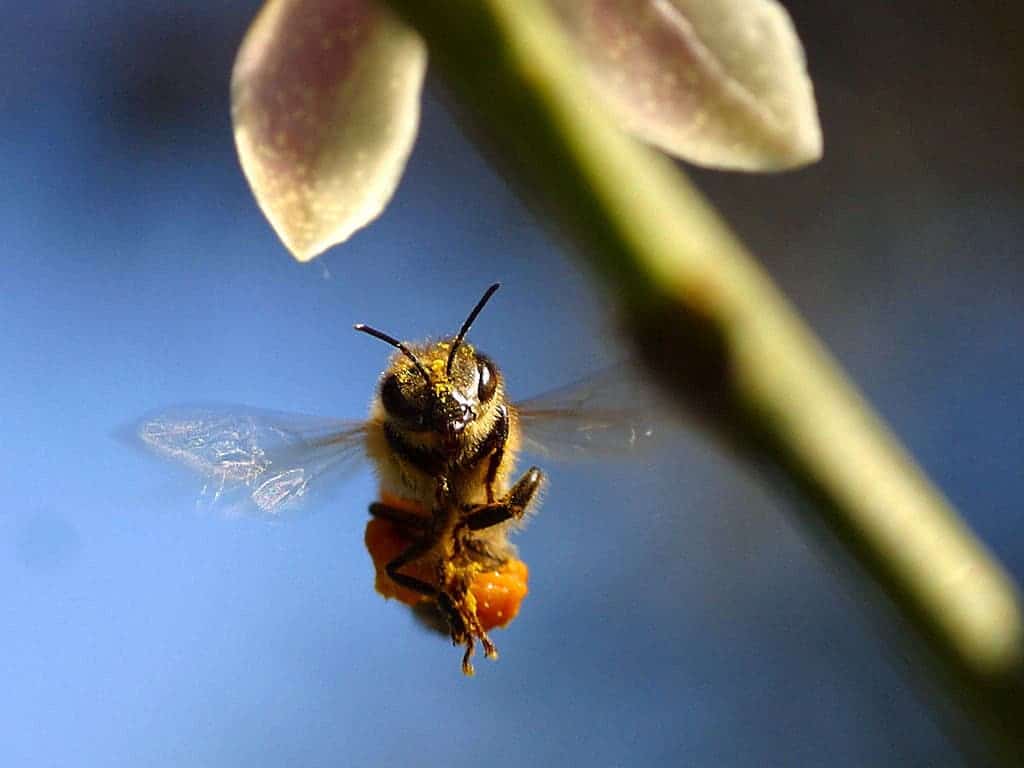The UK’s wildlife is buckling under the strain of human activity: more than one in ten of the country’s species are in danger of going extinct, and the ones most affected have seen a decline of almost two-thirds since 1970, a new State of Nature report warms. Overall biodiversity has also taken a huge hit, with one in six animals, birds, fish, and plants already lost, the study adds.

Image credits Peter Trimming.
A scientific report compiled by more than 50 conservation organizations on the state of nature in the UK paints a dire picture. Massive historical deforestation and industrialization have left the island nation “among the most nature-depleted countries in the world,” putting so much strain on wildlife that most of the country’s ecosystems can’t “reliably meet society’s needs” any longer. But it’s not all to be blamed on the past: the biggest drivers of biodiversity loss over the past four decades are intensive farming practices, urbanization, and the effects of climate change.
“It wasn’t just all back in 70s and 80s, it is still happening now,” said RSBP’s lead conservational scientists and first author of the report Mark Eaton.
“We are getting ever more efficient in our farming. In a way it is something to be celebrated, how good our farming science and technology is, but it does squeeze nature out.”
The damage
The toad, skylark and the wormwood moonshine beetle are among the species of special conservation concern in the UK that have fallen in number by 67% since 1970 overall, and by 12% between 2002 and 2013.
Invertebrates, particularly insects, are struggling. They make up 97% of animal species and provide services fundamental for the ecosystems to function, such as pollination and soil maintenance — so we really want to keep them happy and working. But the study reports insects have seen a 59% decline since 1970.
“If they were to disappear, I think we’d see environmental breakdown very quickly. They are about the most important things out there,” Eaton said.

Image from the public domain.
The biggest driver of wildlife loss is the transformation of habitat. Roughly 75% of the land in the UK is classified as agricultural, with 40% being arable fields or grasslands. This immense ratio of land use is “by far the most significant driver of declines” the study found. New farming methods, such as switching from spring to autumn sowing (which reduces food and habitat for many species), heavier grazing, more pesticides, more fertilizers, and loss of marginal habitats such as ponds and hedgerows are also taking a toll on wildlife.
Species such as the great crested newts, hedgehogs, and corn marigolds are severely impacted by these practices. The large marsh grasshopper is dying out because we’ve drained its native bogs and heath degradation means there’s not enough space to keep all the sand lizard population alive. Urbanization put species such as the water vole into rapid decline and offshore bottom trawling has harmed the ocean quahog, a bivalve which can live for 500 years.
At least there’s some good news
Climate change has brought both good and bad news for wildlife. Species such as the mountain ringlet are abandoning parts of their historical range, but on the other hand, new fish are taking advantage of the warmer waters to migrate deeper into the UK in areas previously left barren by over-fishing.
It’s not going poorly all across the board, though, as the report also found cases of wildlife and habitat recovery. Some bat species, such as the soprano pipistrelle, have been recovering thanks to new legislation protecting them. Bitterns are making a comeback thanks to the creation of new reed-beds, going from just 11 booming males in 1997 to 156 in 2015. Other species are being reintroduced, such as the hazel dormice, short-haired bumblebee, and the large blue butterfly.
But overall, 56% of species in the UK have seen a decline in population between 1970 and 2013, and 53% between 2002 and 2013. So we have some species losing ground really fast while others are increasing in number and range to fill up the ecological space they’ve created. As Eaton put it, this “does not look like a healthy, natural situation. If that carries on, you end up with just 50% left.”
The report also includes a “biodiversity intactness index”, which illustrates the loss of species over time. The UK has lost a much greater part of its natural world that the global average, ranking the 29th lowest out of all 218 countries analyzed.
“It is quite shocking where we stand compared to the rest of the world, even compared to other western European countries: France and Germany are quite a way above us in the rankings,” Eaton said.
“The index gives an idea of where we have got to over the centuries, and we are pretty knackered.”
What we’re doing

Image credits Steve Evans.
What’s actually worrying is that the report shows we have the know-how to fix the damage we’ve caused but we just don’t put our shoulder to the wheel. Conservation efforts are paying off — there’s just not enough of them. Public money invested in biodiversity has dropped by 32% from 2008 to 2015, Eaton said.
“The ability to do it is within our grasp, it is just about resources and the willingness.”
Eaton believes that while Brexit had conservationist groups pretty spooked, it might actually turn out to be a great opportunity for change. The report found that environmental stewardship schemes implemented by some farmers do work, but they’re still small scale. So more wiggle room on how public money is spent on farming is a “huge” opportunity, he says.
“It’s public money, so let’s see a wider range of public benefits from it, including wildlife, water quality and flood prevention, other than just food.”
And government officials share his views. A spokeswoman for the Department of Environment, Food and Rural Affairs (Defra), said that steps are being taken to protect the environment, saying it’s never been cleaner of healthier since the industrial revolution. Woodland cover and water quality are improving, but conservation will remain a central point in the talks with the EU.
“Protecting our precious environment and supporting our world-leading farmers, a cornerstone of our economy, will form an important part of our EU exit negotiations,” she said.
Even if the farmers don’t seem very thrilled to take the heat for the report’s dire findings, they are on board for conservation efforts. Guy Smith, vice-president of the NFU said that agricultural intensification had already ended in the 1990s. By now, he adds, two-thirds of farmers have signed up for agri-environment schemes.
“Therefore it makes little sense to attribute cause and effect to ‘the intensification of agriculture’ in the UK in the last quarter of a century when there hasn’t been any. Other causes acknowledged in the report, such as urbanisation, climate change or increasing predator pressure need greater attention.”
“Above all we need to remember farming is here to provide one of the fundamental staples to life: food,” said Smith. “If we undermine British farming’s competitiveness or its ability to produce food, we risk exporting food production out of Britain and increasing Britain’s reliance on imports to feed itself.”
In the end, the point of the State of Nature report isn’t to point fingers — but to point out what still needs to be done. Writing the report’s foreword, the legendary Sir David Attenborough said that “the natural world is in serious trouble and it needs our help as never before.”
“We continue to lose the precious wildlife that enriches our lives and is essential to the health and well-being of those who live in the UK,” he adds. “But the State of Nature 2016 report gives us cause for hope too.”
“Landscapes are being restored, special places defended, struggling species being saved and brought back. But we need to build significantly on this progress if we are to provide a bright future for nature and for people.”


